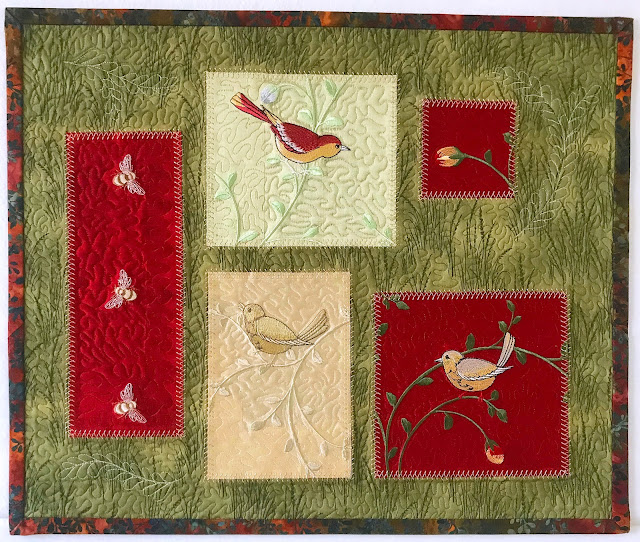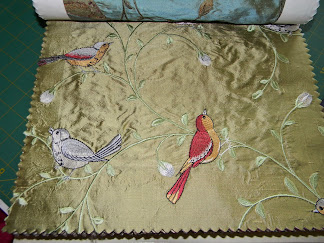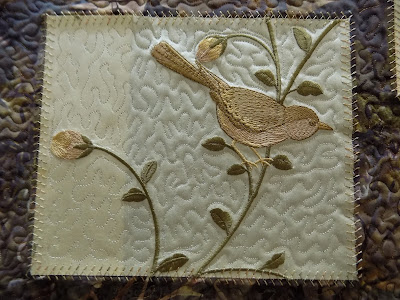April is Parkinson's Awareness Month, so I'm thinking, what better time to address the "elephant in the room" at Linda's Landscape Quilts?
Over the years in my blog, I've occasionally mentioned shoulder and neck issues, but in 2018 a tremor began in my left hand. For a while I suspected it was a condition known as "essential tremor", but as it eventually worsened, it was time to see a neurologist. Four weeks before the Covid lockdowns in 2020, I was diagnosed with PD.
This is a gradual "degenerative" condition, but aside from tremor medication, proper nutrition and rest, it particularly responds well to exercise. Quilting is fairly sedentary, other than moving from the sewing machine to the cutting table to the ironing board. Consequently a fair chunk of of my usual designing/quilting time has been spent walking and gardening (hence the less frequent blog posts) for the last couple of springs, summers and autumns. I'm working on getting the nerve up for winter walking--cold is not a friend to the muscle stiffness and tremor inherent with PD, so an indoor yoga regimen or a gym membership may be in the offing.
What has this to do with quilting, other than loss of time? Everything.
Designing and working with fabric and quilting, especially landscape quilts, is my passion and my sanity saver. Along with knitting, it is how I would choose to spend nearly all of my time if I could. I refuse to give it up. However, I have had to make some adjustments, and might have to make more as time goes by.
Here are some of the changes.
1. Working smaller....size does matter. 😀 No more 40 or 50-inch landscapes; I try to keep them
under 36 in. long or wide. Bed quilts are now batted and quilted in thirds or fourths to cut down
on weight at the machine, adding and fusing the batting sections as I work from the center out.
AND I recently discovered a local guild that will accept quilt tops that they then quilt and give
to charities.
2. Using more machine-guided stitching and less free motion...I could insert a "sad" face here. I love
the variety and grace of free motion. But it's also fun to incorporate decorative machine stitches.
3. Exceptional care using the rotary cutter...my left hand can suddenly spaz while holding the ruler
down.
4. Thinner batting, also for less weight at the machine. To my relief, the quilt texture is still
surprisingly good.
5. Somewhat slower and more deliberate movement around the studio, due to balance issues and
slower reflexes. This one has been a challenge--I'm used to moving fast and gracefully
for 60+ years. A couple of minor falls have nipped that in the bud.
6. Shorter blocks of time spent in any one place or position (leg stiffness can make switching
places and tasks necessary anyway).
7. Fewer blog posts, due both to slower quilt production and slower typing.
8. More patience with myself, especially with fine motor movements such as threading a needle.
I am fortunate so far that the tremor is almost entirely on the left side of my body, while I'm right-handed. But for quilting we depend on both hands for nearly any associated task. So tremor medication is necessary, but there's a fine line, for me at least, between calming the tremor and becoming too sleepy to focus. So, some tremor and some stiffness as well have to be endured and worked around.
And yes, my neurologist keeps me updated on all the latest medical info and PD exercise/therapy groups. But I love my walks with Susie, my son's "Mamalaw" (we usually get in about 3 miles a week in decent weather), and quilting IS my therapy. And knitting and gardening--especially weeding and trimming.
Any of you fellow quilters deal with PD? I'd love to hear any tips you might have for continued comfort, efficiency and quality in quilting. Feel free to comment below. We're all in this together!
All the best,
Linda



































